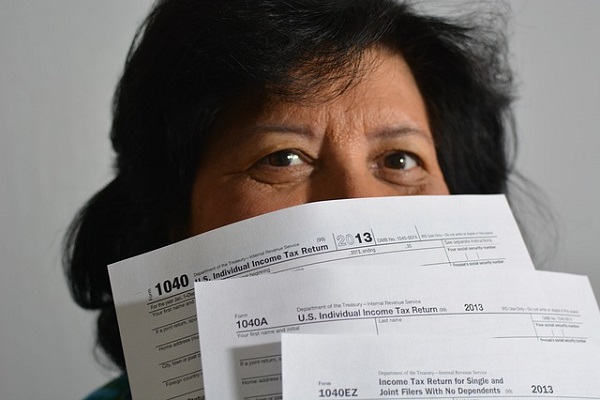August 28, 2018
Your tax bracket, determined by the taxable amount of money you made in 2017, tells you the percentage of your income you’ll pay to the United States government in federal taxes. It may also help you determine how much of a tax bill or tax return you can expect after you file your 2017 taxes. While these amounts fall starting January 1, 2018, because of the new tax laws, the previous amounts remain in place for 2017.
 What is taxable income?
What is taxable income?
Most of the money you make is taxable. For example, any hourly pay from part-time or full-time jobs, your salary, tips over $20 per month, and even unemployment pay count toward your total taxable income for 2017.
Some types of canceled or forgiven debt, winnings from gambling, and alimony payments also count toward your taxable income. Child support is not considered taxable income by the IRS.
All taxpayers can take the standard deduction to reduce the amount of taxes they’ll pay for the year 2017. Married couples filing separately, and single people get $6,350. Married couples filing jointly get $12,700 and anyone filing as head of household gets a $9,350 deduction. This means that you won’t pay federal taxes on that amount of your total income.
For example, a married couple that had a combined income of $38,000 for the year could take a standard deduction of $12,700. Their net income would be $25,300. This is the amount they’d pay taxes on. For the year 2017, they would be in the 15% tax bracket. If their income doesn’t change much in 2018, they’ll pay 12% next year.
The Earned Income Tax Credit (EITC) for parents of three or more children is a maximum of $6,138. Student loan interest deductions of up to $2,500 and tax credits for qualified tuition and expenses of up to $2,500 will benefit some taxpayers, as well for the year 2017.
Tax brackets for income earned in 2017 remain the same as in years past. You can see the IRS taxable income brackets, here.
The deadline to file 2017 taxes is April 17, 2018. There are many tax simulator tools online that will help you estimate the amount of tax you’ll pay for the year 2017. To get the biggest possible tax return, it’s a good idea to seek the help and advice of a tax professional. This is especially important if you experienced major life changes in 2017 like having a baby, getting married or divorced, buying a home, or if you made significantly more or less money than in years past.
A tax professional can help you decide how much to increase or decrease your tax withholding to help you avoid a tax bill when it’s time to file or increase your take-home pay throughout the year. Another service some tax professionals offer is an advance loan, which is based on your anticipated return. This allows you access to a portion of your return in the form of a loan, prior to when the IRS issues your refund. Check with your preparer to see if this is a service they offer, and what the criteria are.
Taxes can be overwhelming. That's why we've created the Sunset Finance Guide to Tax Returns to provide more information.
Related Posts
January 03, 2020
March 06, 2019









